
Mongar District: The Hidden Jewel of Bhutan
Discover Mongar District in Bhutan: A tranquil haven of ancient traditions, stunning landscapes, and cultural riches waiting to be explored.
Nestled in the eastern part of Bhutan, Mongar District is a serene and picturesque region where ancient traditions blend seamlessly with natural beauty. Mongar serves as the gateway to the east and is renowned for its breathtaking landscapes, lush forests, and traditional Bhutanese architecture. The district is less frequented by tourists, making it an ideal destination for those seeking tranquility and an authentic Bhutanese experience. One of the key highlights of Mongar is the Mongar Dzong, an impressive fortress that stands as a testament to Bhutan's rich cultural heritage. Unlike other dzongs in Bhutan, Mongar Dzong was constructed without any plans or drawings, showcasing the incredible skills of local artisans. The dzong hosts several important religious festivals, offering visitors a chance to witness colorful ceremonies and traditional dances. Nature enthusiasts will find Mongar a paradise, with numerous hiking trails leading through pristine forests and past cascading waterfalls. The nearby village of Lhuentse is another must-visit, known for its stunning cliffside monasteries and vibrant textile weaving industry. For a truly immersive experience, tourists can stay in local homestays, where they can enjoy traditional Bhutanese hospitality and cuisine.
Local tips in Mongar District
- Visit during the annual Tshechu festival to experience vibrant local culture and traditional dances.
- Wear comfortable walking shoes as exploring Mongar involves a lot of walking through hilly terrain.
- Try local delicacies like Ema Datshi, a spicy cheese and chili dish, for an authentic Bhutanese culinary experience.
- Respect local customs and dress modestly, especially when visiting religious sites.
- Carry cash as ATMs and card payment facilities may be limited in remote areas.
Mongar District: The Hidden Jewel of Bhutan
Nestled in the eastern part of Bhutan, Mongar District is a serene and picturesque region where ancient traditions blend seamlessly with natural beauty. Mongar serves as the gateway to the east and is renowned for its breathtaking landscapes, lush forests, and traditional Bhutanese architecture. The district is less frequented by tourists, making it an ideal destination for those seeking tranquility and an authentic Bhutanese experience. One of the key highlights of Mongar is the Mongar Dzong, an impressive fortress that stands as a testament to Bhutan's rich cultural heritage. Unlike other dzongs in Bhutan, Mongar Dzong was constructed without any plans or drawings, showcasing the incredible skills of local artisans. The dzong hosts several important religious festivals, offering visitors a chance to witness colorful ceremonies and traditional dances. Nature enthusiasts will find Mongar a paradise, with numerous hiking trails leading through pristine forests and past cascading waterfalls. The nearby village of Lhuentse is another must-visit, known for its stunning cliffside monasteries and vibrant textile weaving industry. For a truly immersive experience, tourists can stay in local homestays, where they can enjoy traditional Bhutanese hospitality and cuisine.
When is the best time to go to Mongar District?
Iconic landmarks you can’t miss
Indo-Bhutan Border Gateway
Experience the tranquil beauty and rich culture at the Indo-Bhutan Border Gateway, a unique intersection of India and Bhutan.
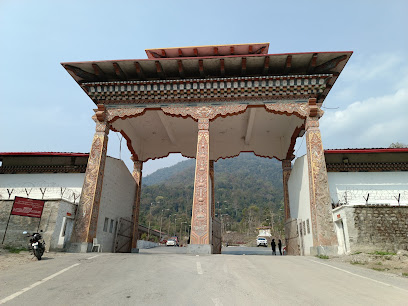
Jamphel Lhakhang བྱམས་་པ་ལྷ་ཁང་།
Explore the tranquility of Jamphel Lhakhang, a historic Buddhist temple in Bumthang Valley, Bhutan, blending spirituality with breathtaking natural beauty.
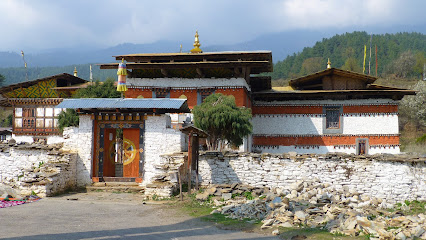
Trashigang Dzong
Explore Trashigang Dzong, a stunning fortress-monastery offering cultural insight and breathtaking views in the heart of Bhutan.

Rangjung Woesel Choling Dratshang
Discover the tranquility of Rangjung Woesel Choling Dratshang, a stunning monastery in Bhutan’s scenic landscapes, offering spiritual insights and natural beauty.
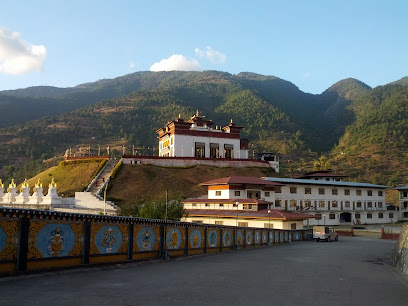
Wangchuk Hotel
Discover the serene Wangchuk Hotel in Mongar, Bhutan, where comfort meets local charm amidst breathtaking landscapes.

Ogyen Choling
Explore Bhutan's Cultural Heritage at Ogyen Choling Museum in Tang Valley, a unique destination showcasing artifacts and traditions of Bhutanese life.
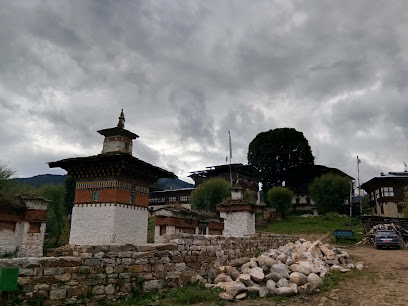
Lhuentse Dzong
Discover the architectural beauty and spiritual significance of Lhuentse Dzong, a fortress embodying Bhutanese culture in the heart of the Himalayas.
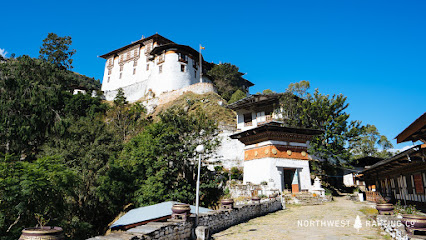
Gom Kora
Explore the serene beauty and spiritual significance of Gom Kora, a revered monastery and cultural gem in Trashiyangtse, Bhutan.

Phrumsengla National Park
Discover the breathtaking landscapes and rich biodiversity of Phrumsengla National Park, a must-visit destination in Bhutan for nature lovers and adventurers.
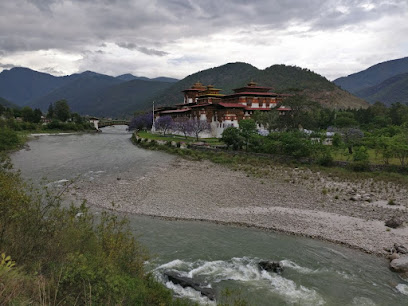
Lhuentse Takela
Discover the serene beauty and spiritual significance of Lhuentse Takela, a sacred pilgrimage site nestled in the majestic Bhutanese mountains.

The World's Tallest Statue of Guru Rinpoche
Explore the awe-inspiring World's Tallest Statue of Guru Rinpoche in Lhuntse, Bhutan - a majestic blend of spirituality and breathtaking Himalayan views.
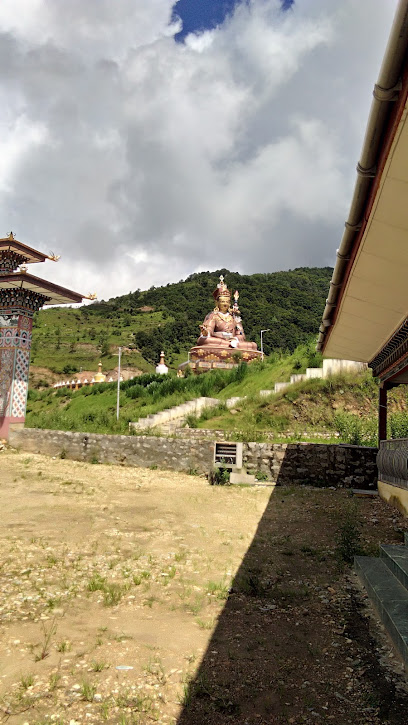
Mongar Town
Discover the vibrant market of Mongar Town, where local culture, fresh produce, and unique handicrafts come together for an unforgettable experience.

Druk Zhongar Hotel
Discover the warmth of Bhutanese hospitality at Druk Zhongar Hotel, your cozy retreat in the heart of Mongar Bazaar.

Chador Lhakhang
Experience the serene beauty and spiritual depth of Chador Lhakhang, a stunning Buddhist temple in the heart of Radi, Bhutan.

Dungkar Nagtshang
Explore Dungkar Nagtshang, a mesmerizing historical landmark in Bhutan, showcasing traditional architecture and rich cultural heritage amidst stunning landscapes.
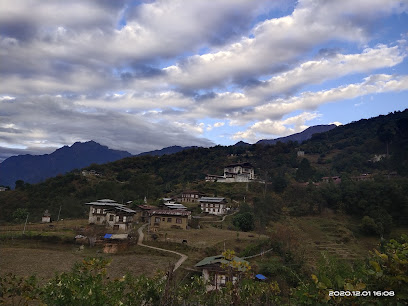
Unmissable attractions to see
Bhutan chowki
Discover the breathtaking beauty and rich culture of Bhutan Chowki, a serene tourist attraction in Deothang, India that promises unforgettable experiences.

Royal Manas National Park
Explore the breathtaking landscapes and rich biodiversity of Royal Manas National Park, Bhutan's first national park and a UNESCO World Heritage site.

Kurjey Lhakhang སྐུ་རྗེས་ལྷ་ཁང་།
Experience the serenity and spiritual richness of Kurjey Lhakhang, a breathtaking Buddhist temple in the heart of Bumthang valleys.

Chorten Kora མཆོད་རྟེན་སྐོར་རར།
Explore the serene beauty and rich cultural heritage of Chorten Kora, a stunning Buddhist temple in Trashiyangtse, Bhutan.

Lhuentse Dzong
Explore Lhuentse Dzong, an iconic fortress in Bhutan that blends breathtaking views with rich cultural heritage and stunning architecture.

Gom Kora
Discover the spiritual heart of Trashiyangtse at Gom Kora Monastery, a serene destination steeped in rich Bhutanese culture and breathtaking natural beauty.
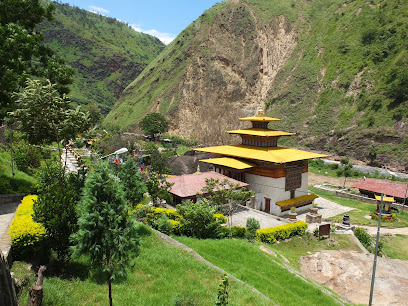
Chador Lhakhang
Explore the tranquility of Chador Lhakhang, a stunning Buddhist temple in Radi, Bhutan, and experience the serenity of Bhutanese spirituality.

Children Park Mongar
Discover the vibrant Children Park Mongar, a family-friendly destination perfect for outdoor activities amidst nature's beauty.

Jamkhardrang Waterfall
Explore the serene beauty of Jamkhardrang Waterfall, a hidden gem in Gong Thung, Bhutan, perfect for nature lovers and adventure seekers.

KHOMA VILLAGE
Explore the serene beauty and rich cultural heritage of Khoma Village, a hidden gem in Bhutan offering authentic experiences and breathtaking landscapes.
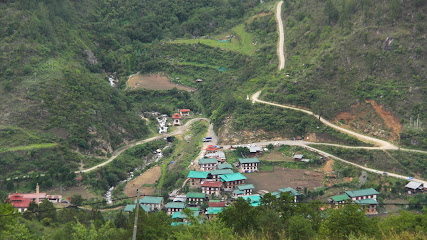
JANGCHUBLING
Explore the historic Jangchubling Dzong in Bhutan, a serene fortress-monastery that embodies the beauty of Bhutanese culture and stunning natural landscapes.

Jangjang Mani
Explore the serene beauty and rich cultural heritage of Jangjang Mani, a captivating tourist attraction in Bhutan.
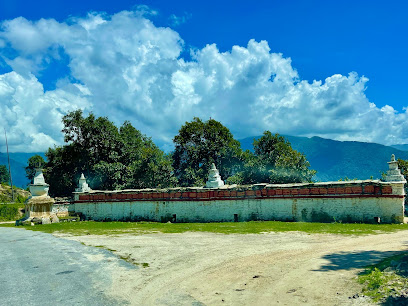
Gyalpozhing, mini-park
Experience serenity and natural beauty at Gyalpozhing Mini-Park, a peaceful retreat in the heart of Gyelposhing, Bhutan.

Desuung park
Discover the tranquility and beauty of Desuung Park in Thebong, Bhutan—a perfect escape into nature for all travelers.

Valley View
Discover the stunning beauty of Valley View in Trashiyangtse, where breathtaking landscapes meet tranquility and adventure awaits.

Essential places to dine
Yangchhag Hotel & Restaurant
Experience the perfect blend of traditional Bhutanese hospitality and delicious cuisine at Yangchhag Hotel & Restaurant in Nganglam.

Rinzin Restaurant
Experience authentic Bhutanese cuisine blended with international flavors at Rinzin Restaurant in Nganglam.

Kuenzang Hotel & Bar
Discover authentic Bhutanese flavors at Kuenzang Hotel & Bar, a must-visit restaurant along Bumthang - Ura Highway.

KT Pizza Hut
Discover the ultimate pizza experience at KT Pizza Hut in Nganglam - where every slice tells a story of flavor.

Tshering Yangkhil Restaurant
Discover authentic Bhutanese flavors at Tshering Yangkhil Restaurant in Zhemgang – where every meal tells a story.

Nyendra Restaurant
Experience the essence of Bhutan through authentic dishes at Nyendra Restaurant in Kanglung.

Rai Restaurant
Experience authentic Bhutanese cuisine in the heart of Jakar at Rai Restaurant – where tradition meets flavor.
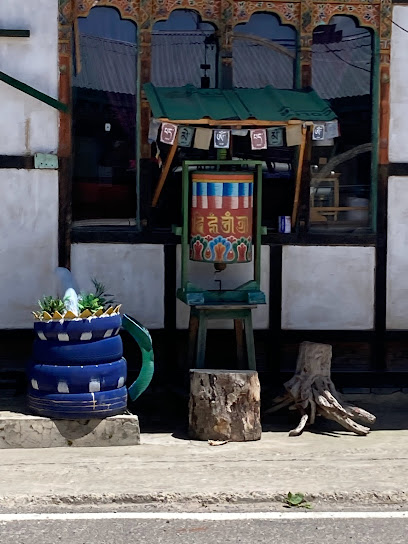
Yumchen Restaurant
Experience authentic Bhutanese flavors at Yumchen Restaurant in Mongar; a must-visit culinary destination on your travels.

Pema Restaurant
Discover authentic Bhutanese flavors at Pema Restaurant in Panbang Town - where every dish tells a story.

Mongar serzhong
Discover authentic Bhutanese cuisine at Mongar Serzhong in Ngatshang—where tradition meets flavor in every dish.

HASH-TAG
Experience authentic Bhutanese cuisine at HASH-TAG in Mongar – where every dish tells a story.

CHICK A ZAA
Experience authentic Bhutanese flavors at Chick A Zaa in Trashigang - where every dish tells a story.

Narphung Travellers Buffet
Experience authentic Bhutanese cuisine amidst the stunning landscapes of Narphu at Narphung Travellers Buffet.

Norwang Restaurant
Experience authentic Bhutanese flavors at Norwang Restaurant in Throm - where tradition meets taste.

Rigwang Snooker And Resturent
Experience authentic Bhutanese flavors at Rigwang Snooker And Restaurant in Mongar - where great food meets fun!

Markets, malls and hidden boutiques
Google Collection Mongar Bhutan
Discover the charm of Mongar at Google Collection, your go-to general store for local handicrafts, essentials, and unique souvenirs in Bhutan.

Green Tech shop
Explore the Green Tech Shop in Mongar for the latest in electronics, eco-friendly gadgets, and exceptional service in a vibrant shopping atmosphere.

Lhuntse Mongar Junction Farmers Stall
Discover fresh local produce and authentic Bhutanese flavors at Lhuntse Mongar Junction Farmers Stall, a must-visit stop along the scenic highway.

Miniso Bhutan Mongar
Explore Miniso Bhutan Mongar for unique, affordable shopping that captures the essence of local culture and international trends.

DK'S MEAT SHOP
Explore the heart of Bhutanese culinary tradition with fresh, high-quality meats at DK's Meat Shop in Mongar.

Kushal cafeteria
Experience the warmth and flavors of Kushal Cafeteria, a cozy coffee shop in Mongar, perfect for travelers and locals alike.

Druk Namsey Shop
Explore the rich cultural heritage of Bhutan through unique handcrafted items at Druk Namsey Shop in Lingmethang.

BD Corner
Explore BD Corner in Mongar for a unique blend of traditional and contemporary Bhutanese fashion, perfect for every traveler.

SONAM ENTERPRISE
Explore the heart of Mongar at Sonam Enterprise, your local general store for unique souvenirs and authentic Bhutanese products.

New Life Enterprise
Explore New Life Enterprise in Mongar, your go-to hardware store for tools and materials, reflecting the spirit of the local community.

Doksumpa NN Mart
Explore Doksumpa NN Mart in Mongar for an authentic shopping experience filled with local products and vibrant Bhutanese culture.

Sangay Dorji General Shop
Explore the authentic tastes of Bhutan at Sangay Dorji General Shop in Mongar, your gateway to local groceries and culinary delights.

D N General and Liquor shop
Explore local flavors and essentials at D N General and Liquor Shop in Mongar, a must-visit destination for every traveler.

Sonam Tobgay General Shop
Discover the charm of local life at Sonam Tobgay General Shop, a delightful general store in Gyelpozhing offering unique goods and a warm community atmosphere.

Lhayul General Shop
Explore the Lhayul General Shop in Bainang Gonpa for unique Bhutanese crafts, authentic souvenirs, and a glimpse into local culture.
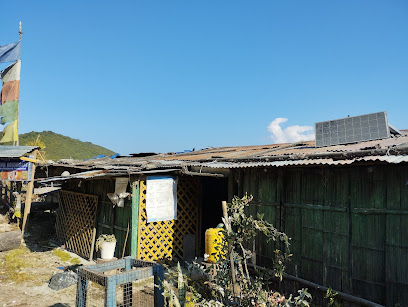
Essential bars & hidden hideouts
Mathang Hotel
Experience authentic Bhutanese cuisine in a warm and inviting atmosphere at Mathang Hotel in Lingmethang, Bhutan.

Kuenzang Hotel & Bar
Discover the authentic taste of Bhutan at Kuenzang Hotel & Bar, where local flavors meet stunning views along the Bumthang - Ura Highway.

ichiraku ramen restaurant
Experience the authentic taste of Japanese ramen at Ichiraku Ramen in Mongar, where every bowl is a delightful adventure for your taste buds.

Koka Point Restaurant
Discover the culinary delights at Koka Point Restaurant in Mongar, where local flavors meet international favorites in a stunning mountain setting.

Yumchen Restaurant
Experience authentic Bhutanese flavors at Yumchen Restaurant in Mongar, where every dish tells a story.

TP's Bar
Discover TP's Bar in Lingmethang: A lively spot for locals and tourists to enjoy unique drinks and vibrant nightlife.

Tiny Fast Food
Discover the flavors of Bhutan at Tiny Fast Food, a local favorite in Mongar offering delicious fast food with a unique twist.

Mongar serzhong
Experience authentic Bhutanese cuisine at Mongar Serzhong, a cozy restaurant in Ngatshang offering traditional flavors and local hospitality.

HASH-TAG
Experience the vibrant flavors of Bhutan at HASH-TAG, a top restaurant in Mongar blending traditional and modern culinary art.

Tenzin Wangmo Bar
Tenzin Wangmo Bar in Jakar: A perfect blend of local charm and refreshing drinks for tourists seeking relaxation.
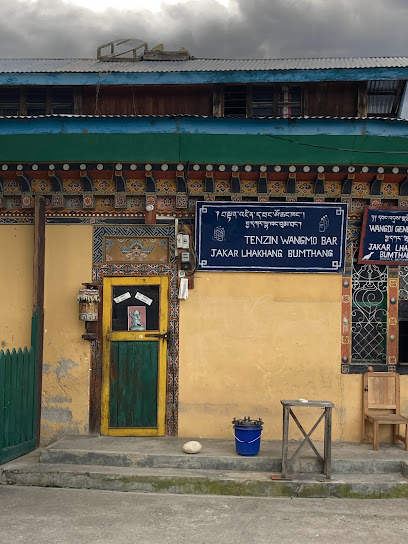
Yangbari lhakang
Experience authentic Bhutanese cuisine at Yangbari Lhakang, where every dish tells a story of tradition and flavor.
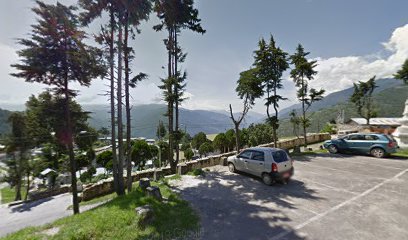
Mongar
Discover the authentic flavors of Bhutan in Mongar, where traditional cuisine meets warm hospitality amidst stunning landscapes.

Sonam Jurmi General Shop, Bar and Canteen
Discover the heart of Pemagatsel at Sonam Jurmi General Shop, Bar and Canteen, where local flavors and warm hospitality await.

Dorji Gyeltshen Restaurant and bar
Experience authentic Bhutanese cuisine at Dorji Gyeltshen Restaurant and Bar, where every dish tells a story of tradition and flavor.

Antilia Grand Nite Hotel
Explore the culinary treasures of Bhutan at Antilia Grand Nite Hotel, where local flavors meet international cuisine in a warm and inviting setting.

Local Phrases about Mongar District
-
- Helloཀླུ་ཤི
[lu shi] - Goodbyeབསྒུབས་པ
[segubpa] - Yesཡོད
[yo] - Noམ་མ
[ma ma] - Please/You're welcomeཤེས་པ
[shep] - Thank youབསྟན་འཛིན
[sten dzin] - Excuse me/Sorryནང་དུ
[nang du] - How are you?ཁྱེད
[khye] - Fine. And you?བདག་མ
[dag ma] - Do you speak English?ཨིན་ཇོན་ལེན་ཌི་ས་ཡག་པོ
[injon lendi sa yagpo] - I don't understandའདི་ལམ་མེད
[di lamme]
- Helloཀླུ་ཤི
-
- I'd like to see the menu, pleaseམ་ཇི་འགོག་བར
[ma ji gogpar] - I don't eat meatམ་ཆུད་ས་མེ
[ma chuda me] - Cheers!གྲོང་ར
[drong ra] - I would like to pay, pleaseམ་འགོག་བར
[ma gogpar]
- I'd like to see the menu, pleaseམ་ཇི་འགོག་བར
-
- Help!གསོལ
[sol] - Go away!ང་ལ་དང
[nga la dang] - Call the Police!སྲུངས་འཛིན
[sung dzin] - Call a doctor!སྲུངས་དག
[sung dag] - I'm lostཀ་ཡིས་དག
[ka yi dag] - I'm illང་ཡིས
[nga yi]
- Help!གསོལ
-
- I'd like to buy...མ་འགོག་བར
[ma gogpar] - I'm just lookingའཕགས་ལ་ལོ
[pagla lo] - How much is it?འགོག་བར
[gogpar] - That's too expensiveརིག་མེ
[rig me] - Can you lower the price?ཤིས་བར
[shi bar]
- I'd like to buy...མ་འགོག་བར
-
- What time is it?དེའི་དུས་སམ
[de'i du sam] - It's one o'clockདེའི་བུ་མེས
[de'i bu me] - Half past (10)བསྒུབས་མེས་ཕུ་བར
[segubpa me phubar] - Morningམངའ
[nga] - Afternoonསྔོ
[ngo] - Eveningདགོས
[gok] - Yesterdayཁ་སང
[kha sang] - Todayད་རང
[da rang] - Tomorrowསར
[sar] - 1གཅིག་ལ
[gchik la] - 2གཉིས་ལ
[nyi la] - 3གསོལ་ལ
[sol la] - 4བཞི་ལ
[zhi la] - 5ལྷ་ལ
[lha la] - 6ཕྱིར་ལ
[chir la] - 7བདུན་ལ
[dun la] - 8བར་ལ
[bar la] - 9ཤིས་ལ
[shi la] - 10བཅུག་ལ
[chug la]
- What time is it?དེའི་དུས་སམ
-
- Where's a/the...?མཁས་སུབ་ལ
[khak sub la] - What's the address?འཛིན་གར
[dzin gar] - Can you show me (on the map)?ཤིས་གར
[shi gar] - When's the next (bus)?མཁས་སུབ་ལ
[khak sub la] - A ticket (to ....)མཆན
[chen]
- Where's a/the...?མཁས་སུབ་ལ
History of Mongar District
-
Mongar District, nestled in the eastern part of Bhutan, has a rich tapestry of history that dates back to the 9th century. The area was initially settled by various tribes who practiced animism before the arrival of Buddhism. The district's strategic location along the ancient trade routes facilitated cultural exchanges and the establishment of early settlements.
-
Buddhism began spreading to Mongar District in the 8th century through the teachings of Guru Rinpoche (Padmasambhava). Numerous monasteries and temples were established, including the revered Aja Ney, one of the most sacred pilgrimage sites in Bhutan. The influence of Buddhism shaped the spiritual and cultural landscape of Mongar, making it a hub for religious activities.
-
During the 17th century, Chogyal Minjur Tenpa, the third Desi of Bhutan, played a significant role in the unification and administration of the eastern regions, including Mongar. He established administrative centers and fortresses (Dzongs) to consolidate control and promote peace and stability in the area. Mongar Dzong, constructed in 1930, continues to serve as a prominent administrative and religious center.
-
In the mid-19th century, the British Empire's expansion in India brought them into conflict with Bhutan. The Duar War (1864-1865) resulted in Bhutan ceding several territories to the British, although Mongar remained under Bhutanese control. This period marked a turbulent time in Bhutan's history and Mongar's resilience in maintaining its cultural heritage.
-
The latter half of the 20th century saw significant developments in Mongar District under the reign of the Third King, Jigme Dorji Wangchuck. Efforts to modernize infrastructure included the construction of roads, schools, and hospitals. The establishment of Mongar Regional Referral Hospital in 2003 has been pivotal in improving healthcare access for the eastern regions of Bhutan.
-
Mongar District is renowned for its vibrant festivals, such as the Mongar Tshechu, celebrated annually with colorful masks, traditional dances, and music. These festivals not only serve as religious observances but also as a means of preserving and showcasing the district's unique cultural heritage. The local craftsmanship in weaving and textile production further highlights the rich cultural tapestry of Mongar.
Mongar District Essentials
-
Mongar District is located in eastern Bhutan. The nearest international airport is Paro International Airport, approximately 450 kilometers away. From Paro, you can take a domestic flight to Bumthang's Bathpalathang Airport, which is closer to Mongar. Alternatively, you can travel by road from Thimphu or Paro. The drive from Thimphu to Mongar typically takes around 10 to 12 hours via the East-West Highway, offering scenic views of Bhutan's diverse landscapes.
-
Within Mongar District, transportation options include taxis, buses, and private cars. Taxis are readily available and can be hired for local travel or longer trips. The local bus service connects Mongar town with nearby villages and other districts. Renting a car with a driver is a convenient option for exploring the region at your own pace. Be prepared for winding mountain roads and varying road conditions.
-
The official currency in Bhutan is the Bhutanese Ngultrum (BTN). Indian Rupees (INR) are also widely accepted. Credit cards are accepted in some hotels and larger establishments, but it is advisable to carry cash, especially in smaller towns and rural areas like Mongar. ATMs are available in Mongar town, but it is wise to withdraw sufficient cash in larger cities like Thimphu or Paro before traveling.
-
Mongar District is generally a safe destination for tourists. However, as with any travel destination, it is advisable to take standard precautions. Avoid walking alone at night in unfamiliar areas and keep an eye on your belongings in crowded places. There are no specific high-crime areas targeting tourists, but it is always best to stay vigilant and aware of your surroundings.
-
In case of an emergency, dial 113 for police assistance and 112 for medical emergencies. The Mongar Regional Referral Hospital is well-equipped to handle medical emergencies. It is recommended to have travel insurance that covers medical emergencies. For minor health issues, there are pharmacies in Mongar town where you can purchase over-the-counter medications.
-
Fashion: Do dress modestly, especially when visiting religious sites. Avoid wearing revealing clothing. Religion: Do respect local customs and traditions. Always remove your shoes and cover your head when entering temples and monasteries. Public Transport: Do be respectful and give up your seat to elderly passengers. Don’t eat or drink on public transport. Greetings: Do greet people with a 'Kuzu Zangpo La' (Hello). A slight bow of the head is also a sign of respect. Eating & Drinking: Do try local delicacies and accept food offerings graciously. Don’t refuse hospitality, as it is considered impolite.
-
To experience Mongar District like a local, visit the weekend market in Mongar town where you can buy fresh produce and traditional Bhutanese goods. Engage with locals, as they are often friendly and willing to share stories about the region's history and culture. Don’t miss visiting the Mongar Dzong, a historic fortress that offers stunning views of the surrounding area. For a unique experience, attend a local festival (Tsechu) to witness traditional Bhutanese dances and rituals.
Trending Landmarks in Mongar District
-
Indo-Bhutan Border Gateway
-
Jamphel Lhakhang བྱམས་་པ་ལྷ་ཁང་།
-
Trashigang Dzong
-
Rangjung Woesel Choling Dratshang
-
Wangchuk Hotel
-
Ogyen Choling
-
Lhuentse Dzong
-
Gom Kora
-
Phrumsengla National Park
-
Lhuentse Takela
-
The World's Tallest Statue of Guru Rinpoche
-
Mongar Town
-
Druk Zhongar Hotel
-
Chador Lhakhang
-
Dungkar Nagtshang
Nearby Cities to Mongar District
-
Things To Do in Trashigang
-
Things To Do in Jakar
-
Things To Do in Bumthang
-
Things To Do in Trongsa
-
Things To Do in Guwahati
-
Things To Do in Wangdue Phodrang
-
Things To Do in Punakha
-
Things To Do in Thimphu
-
Things To Do in Paro
-
Things To Do in Phuentsholing
-
Things To Do in Shillong
-
Things To Do in Itanagar
-
Things To Do in Rangpur
-
Things To Do in Gangtok
-
Things To Do in Sylhet







